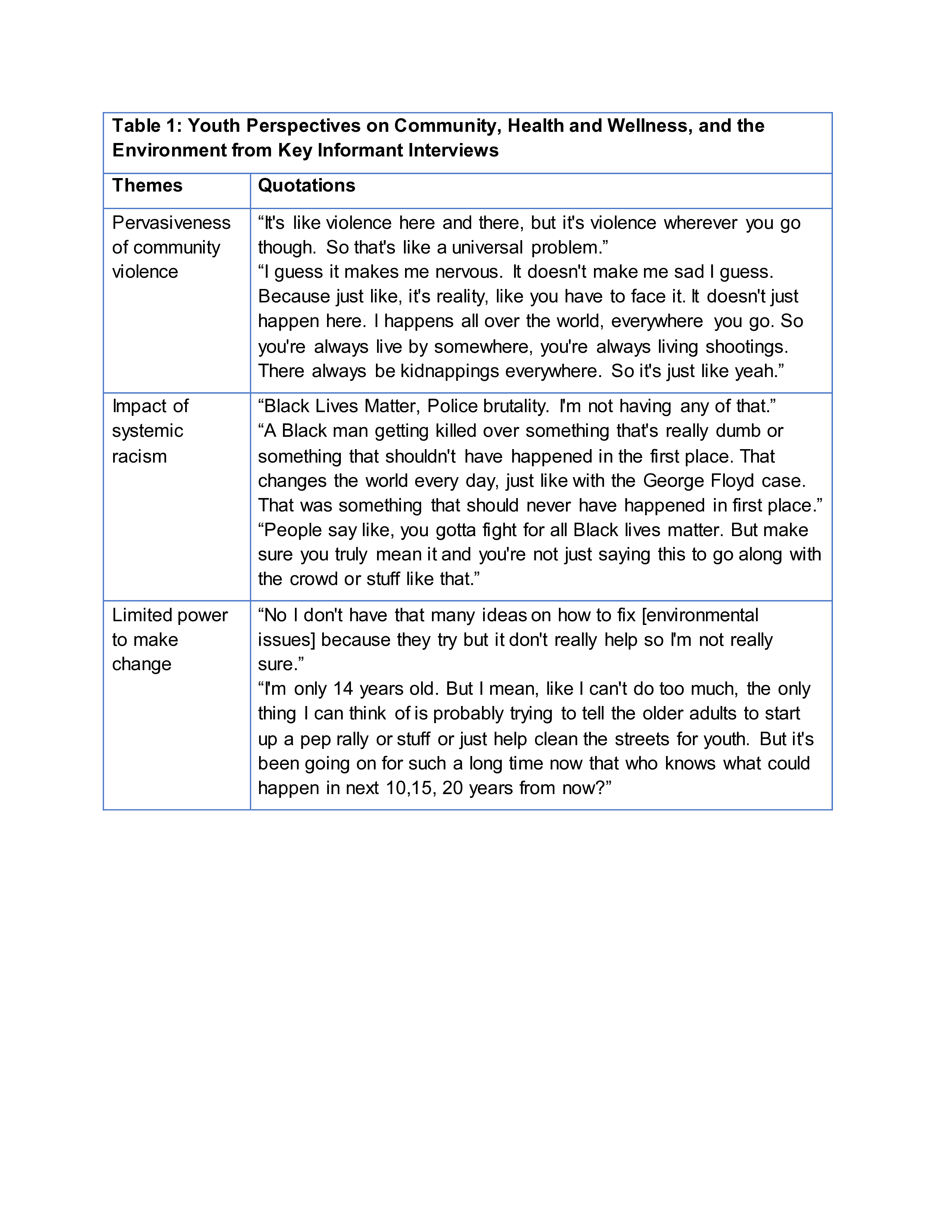Health Equity/Social Determinants of Health
Health Equity/Social Determinants of Health 5
441 - Addressing Health and Wellness for At-Risk Urban Youth: A Community-Based Participatory Research Study
Publication Number: 441.219

Christopher Rush, MBA
Exdcutive Director
Champion Academy
Rochester, New York, United States
Presenting Author(s)
Background: Champion Academy(CA) is a youth development program that mentors at-risk urban youth aged 13-18 years. We used a CBPR approach to assess youth healthy living needs and attitudes to inform EH training.
Objective: To 1) assess youth perspectives on health and wellness, and understanding of EH and Environmental Justice (EJ) issues; 2) explore community perspectives on the intersection of structural racism, health equity, and youth health and wellness.
Design/Methods: We used a mixed methods CBPR framework. We conducted key informant interviews with youth, staff and key CA stakeholders to assess concerns about their environment, including EH problems and EJ. We surveyed youth at orientation to assess baseline health and wellness. This informed follow-up focus groups to understand views on health and wellness, and what environmental factors impact their daily lives. Interviews and focus groups were analyzed for key themes using principles of thematic analysis: transcripts were analyzed independently by coders, and the analysis was reviewed to reach a consensus.
Results:
Surveys on health and wellness (n=45) indicated that the majority (29/45, 64%) reported that they enjoyed spending time outdoors; fewer than half (45%) had concerns about environmental pollution. In-depth interviews included 8 black youth (12-18 yr), 2 youth alumni, and 5 staff and key stakeholders. Three focus groups included 10-14 youth (total n=36). Key themes from youth interviews included: (1) pervasiveness of community violence; (2) impact of systemic racism, and (3) limited power to make change. (Table 1) Key themes from adult interviews were: 1) environmental problems and violence have become normalized; 2) youth trying to survive cannot pay attention to health and wellness; 3) current educational efforts for youth need to be framed in a way that is relevant to them; 4) poor access to healthy foods; and 5) mindsets need to change. (Table 2) Exploration of EH concerns identified the need to address community violence and structural racism. Key themes for focus groups identified that a healthy environment means having clean air, water, and limited pollution. However, the discussion of the environment focused mainly on community violence and crime, which are part of the daily experience of urban youth.
Conclusion(s): Use of a CBPR framework to understand the concept of EH by urban youth identified the need to address community violence, which was participants’ highest priority to address EH and EJ concerns. A collaborative approach to structural racism is needed to promote resilience, health, and wellness for urban youth.
.jpg)
